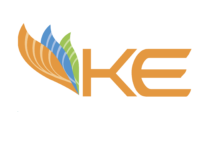AKD Research, the research arm of brokerage house AKD Securities, has for the most part been bullish on Pakistan’s oil marketing sector. In a 24 page industry wide report published in December 2020, the research wing explicitly said: “We assume a bullish outlook for domestic OMCs with an investment thesis premised on favourable policy developments entailing national storage benchmarks, assured annual margin revision, increased barriers to entry; and improved liquidity vis-à-vis potential clearance of circular debt.”
The analyst writing that report, Shahrukh Saleem, has now followed up with a smaller, but no less interesting analysis of the fourth quarter of the year 2020. There are three main trends of this quarter: listed players losing market share, increased throughput levels in the last quarter, and a bright future, particularly for Pakistan State Oil (PSO).
First, it is important to note that the mix of fuels in the fourth quarter changed somewhat. Saleem points out that despite improving economic activity, there has been increased power generation of furnace oil. This in turn has slightly reduced the share of retail fuels in the overall volume mix, with retail fuel’s share standing at 84% for the fourth quarter of calendar year 2020, against 85% for the fourth quarter of 2019. Meanwhile, increasing consumption in the economy has led to increased demand for transport fuels, which means transport now accounts for 92% of high speed diesel demand, compared to 89% in the third quarter of 2020. Motor spirit, or petrol continues to be dominated by the road segment, contributing around 99% of total sales.
Now, to the first point: listed players have lost market share to unlisted players in the retail fuel segment. The share of listed companies stands at 67% for the fourth quarter of 2020; compare that to 68% in the fourth quarter of 2019. Within this segment, Attock Petroleum Limited faced the largest contraction, as the company’s retail fuel market share declined to 7.2% for the fourth quarter of 2020, compared to 9.2% in the fourth quarter of 2019.
Second, two factors have helped oil marketing companies. One, there has been an improvement of economic activity post the listing of Covid-19 restrictions; and two, the government has continued its drive against the influx of grey products (the term for fuel sold through non-authorized distribution channels). The results are in: the average throughput levels of listed oil marketing companies increased by 6% year-on-year, and 7% quarter-on-quarter to 663,000tons. High speed diesel throughput witnessed a higher increase of 7% year-on-year, and 23% quarter-on-quarter, as the fuel was most influx of grey product. Motor spirit (petrol) throughput increased by 5.7% year-on-year7, but declined on a quarterly basis, because of decreased mobility due to the winter season.
What about individual companies themselves? Hascol had a throughput level of 521,000 litres per outlet, or a decrease of 25% year-on-year and an increase of 7% quarter-on-quarter; Shell Pakistan had a throughput level of 648,000 litres per outlet, or a increase of 16% year-on-year and an increase of 16% quarter-on-quarter; Attock Petroleum had a throughput level of 515,000 litres per outlet, or a decrease of 19% year-on-year and an increase of 10% quarter-on-quarter; and PSO had a throughput level of 635,000 litres per outlet, or a increase of 17% year-on-year and an increase of 7% quarter-on-quarter
According to Saleem: “Financial constraints continue to grapple Hascol, with company’s throughput decreasing by 25% year-on-year while PSO outperformed listed peers with a growth of 17% year-on-year as company continues to capitalize on widespread storage network.”
All four companies added new outlets in the fourth quarter of this year, from one new outlet for Shell, to 14 for Hascol.
So what does this all mean? Saleem points to the some interesting figures: the difference between the levels of high speed diesel and petrol (102,000 liters per pump, in the fourth quarter of 2020, compared to the 164,000 litres per pump in the third quarter of the same year), means that there has been a significant decrease in smuggling. In fact, the government’s continued drive against an influx of grey products will further improve the offtake for high speed diesel, according to Saleem. After the winter season, petrol sales are expected to pick up as well.
According to Saleem, the different figures also sheds light on different strategies adopted by different companies. For instance, Shell’s strategy of focusing on urban centers has resulted in the highest difference of 164,000 litres per mump. Meanwhile, PSO’s difference stands at just 23,000 litres per pump, highlighting the company’s widespread retail network.
“Moving forward, with the overall competitive landscape improving after incorporation of exchange losses and reduced exposure to oil price volatility, we expect competition to only intensify with players focusing on discounts and loyalty cards,” says Saleem.
He singles out PSO as a top pick, based on the clearance of circular debt, shift in cash profile of cash flows due to increased share of retail fuels, and an improving storage infrastructure.


























